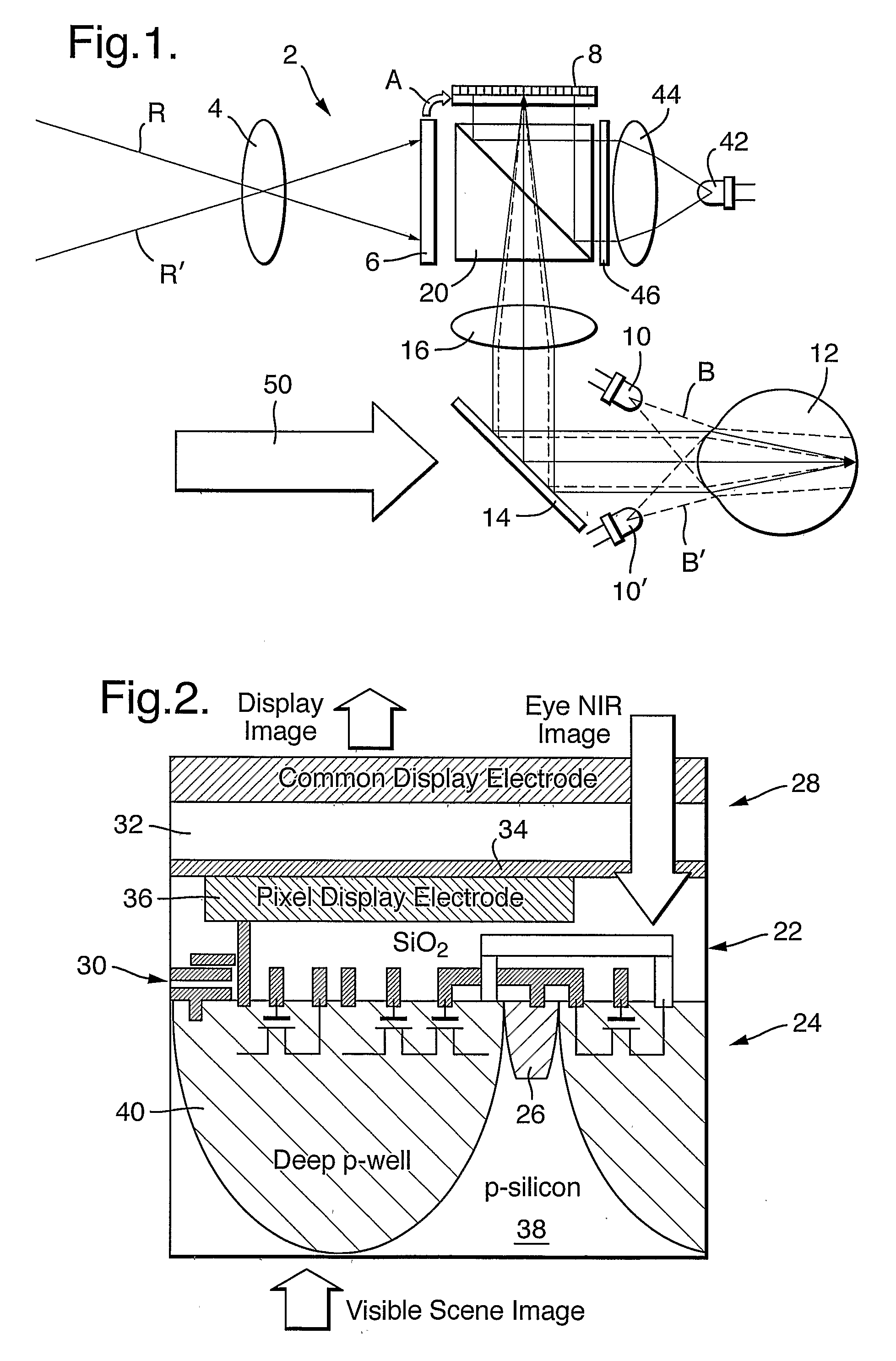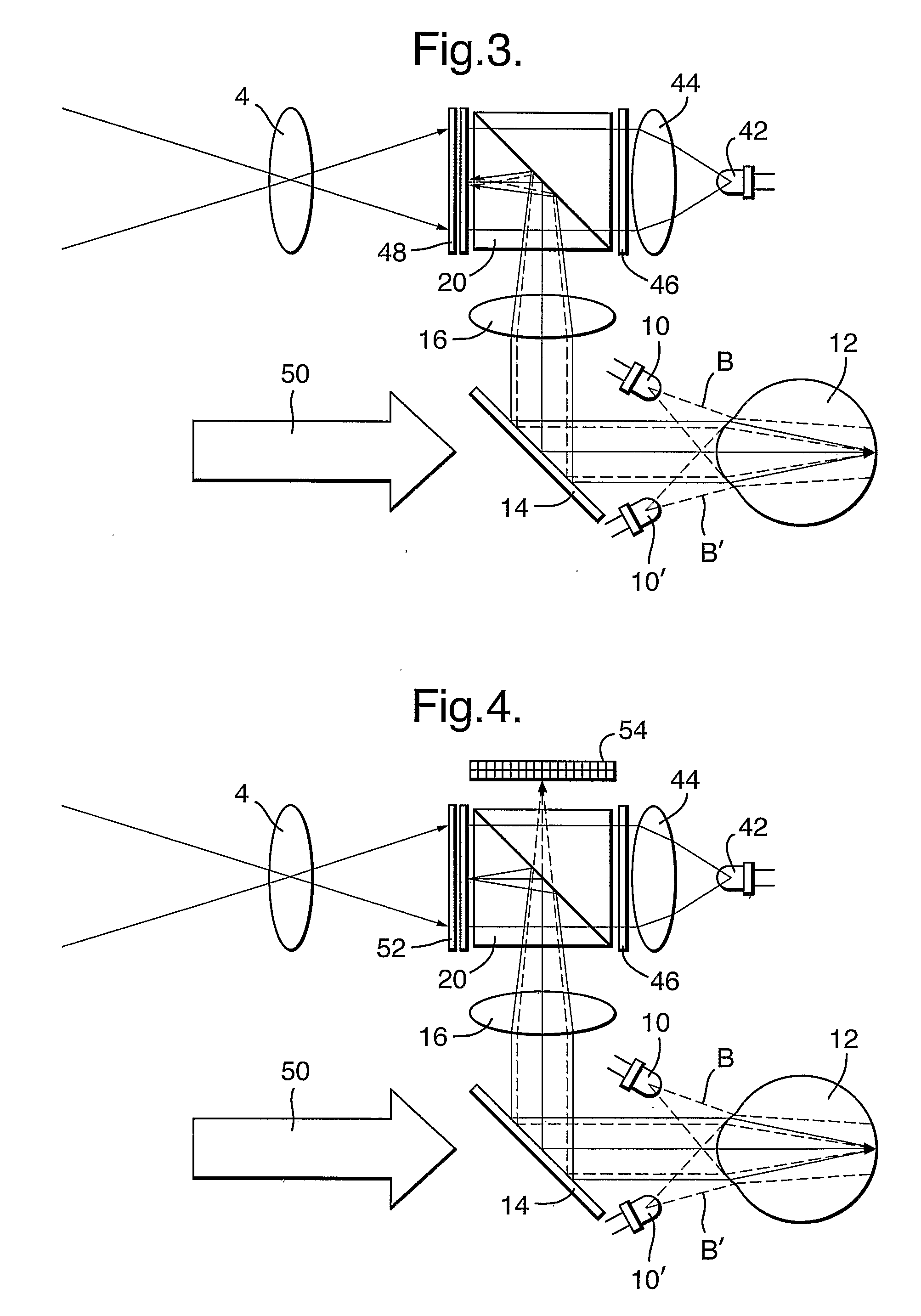Low vision aid device
a technology of low vision and aid device, which is applied in the field of low vision aid device, can solve the problems of reducing affecting the ability of people to read, write, and recognize faces, and affecting the ability of people to discriminate objects or face recognition, so as to reduce the size of the low-vision goggle of the user
- Summary
- Abstract
- Description
- Claims
- Application Information
AI Technical Summary
Benefits of technology
Problems solved by technology
Method used
Image
Examples
Embodiment Construction
[0021]Referring to FIG. 1, there is illustrated an embodiment of a low-vision aid device 2 according to the present invention. Starting with the two crossed rays R, R′, which indicate the observed scenery, after passing a scene-imager optics 4, is imaged by a scene imager 6, which can be constituted by a simple CMOS imager. Following appropriate image processing of the scene information, the processed image is transferred, as indicated by the arrow A, to the display part of the eye-tracker(imager) / display (image transceiver device) ITD 8 for display. The NIR light emitting diodes (NIR-LEDs) 10, 10′, located adjacent to the viewer's eye 12, radiate R-polarized NIR beams B, B′ into the observer's eye 12. The R-polarized NIR beams are reflected from the retina, carrying the retinal image down the optical path, as shown by the broken lines. The image beam is then reflected by the non-polarizing beam splitter (NBS) 14, passes through a display eyepiece / eye tracker optics 16 to a polarizi...
PUM
 Login to View More
Login to View More Abstract
Description
Claims
Application Information
 Login to View More
Login to View More - R&D
- Intellectual Property
- Life Sciences
- Materials
- Tech Scout
- Unparalleled Data Quality
- Higher Quality Content
- 60% Fewer Hallucinations
Browse by: Latest US Patents, China's latest patents, Technical Efficacy Thesaurus, Application Domain, Technology Topic, Popular Technical Reports.
© 2025 PatSnap. All rights reserved.Legal|Privacy policy|Modern Slavery Act Transparency Statement|Sitemap|About US| Contact US: help@patsnap.com



